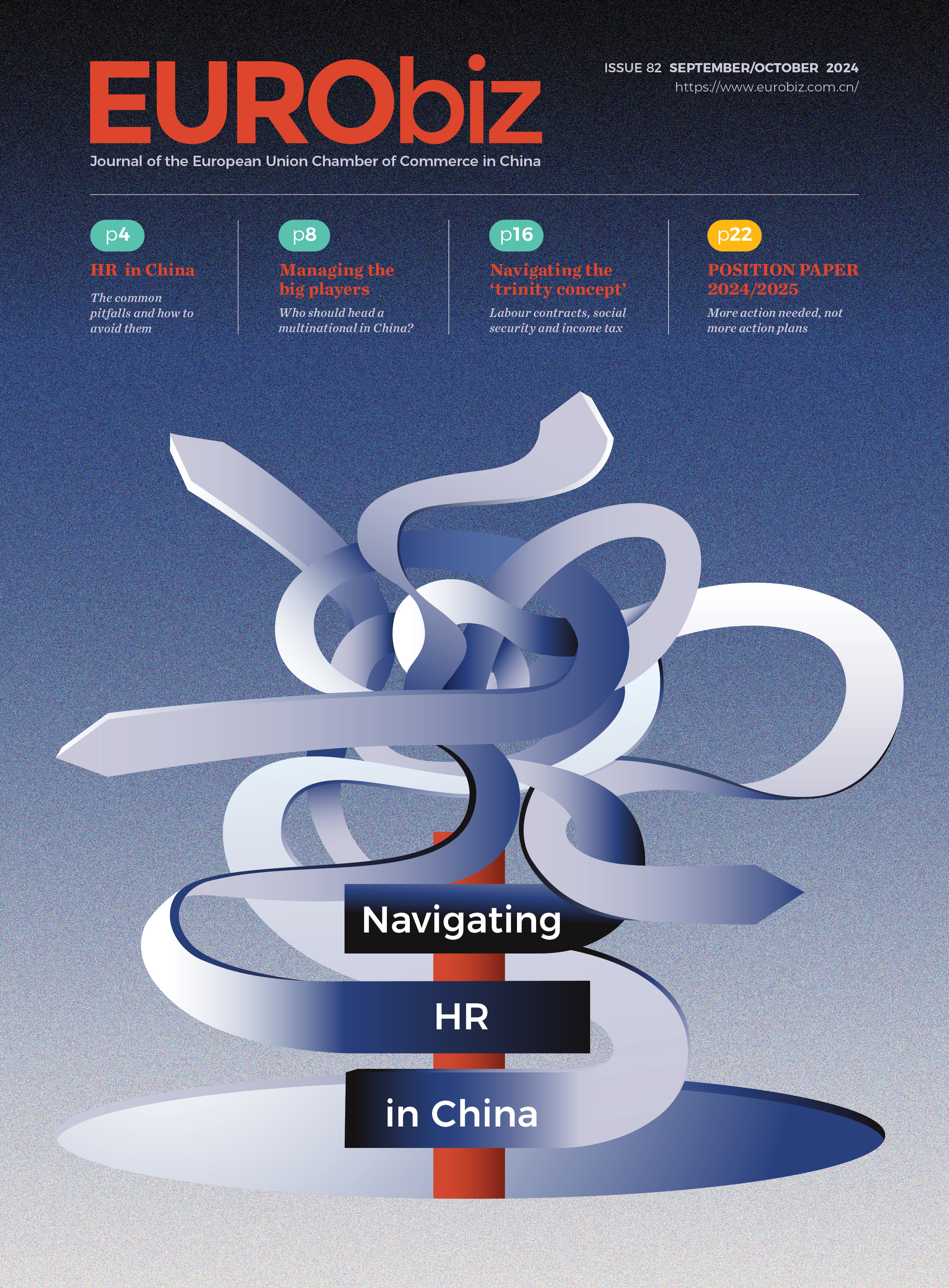 A recently-published report has revealed the extent to which foreign investment is restrained in China.
A recently-published report has revealed the extent to which foreign investment is restrained in China.
Authored by Timothy P. Stratford from Covington and Burling LLP, Measures and Practices Restraining Foreign Investment in China scrutinises more than 260,000 separate regulations promulgated by 39 central government agencies and five provincial-level governments. Commissioned by the European Commission’s Directorate-General for Trade, the report goes through China’s complex investment environment with a fine tooth comb. It lays bare all the issues—both horizontal and sectoral—in order to give both European and Chinese authorities a complete picture of the inherent systemic problems in order to help guide the ongoing negotiations for the EU-China Bilateral Investment Agreement. The hope is that if both sides are aware of the where the difficulties lie, the negotiations will be more progressive.
Goal, purpose and scope
This report aims to identify and describe the full range of Chinese legal measures and practices that restrain foreign investment in China. “What do we mean by restrain?” asks Stratford rhetorically, “It means that the measure or practice can result in more favourable treatment for at least one domestic investor or investment than is generally available for foreign investors or investments.”
Its purpose is to help trade negotiators, trade associations and individual companies to prioritise issues that need to be addressed in trade negotiations currently underway in China.
In terms of the scope, the report tries to define or describe all the horizontal measures that affect companies, regardless of industry; then all of the sectoral measures that apply to the following 10 industry sectors: automobile manufacturing; chemical manufacturing; construction and infrastructure (including water supply and sewage treatment); distribution; energy; financial services (including banking, securities, and insurance); healthcare (including pharmaceutical, medical device, and cosmetics manufacturing and healthcare services); mining; professional services (including legal, accounting, consulting, and architecture); and telecommunications
The provincial-level governments selected were Beijing, Chongqing, Guangdong, Shanghai and Tianjin.
Methodology and regulatory landscape
There are 80 central government agencies that can promulgate laws, regulations and other measures.
“We looked at the whole list and decided that there are probably 27 of them that would likely issue measures that could affect foreign investors in China,” says Stratford, “Then, in order to cover all of the agencies that might issue rules related to the 10 sectors, we added another 12 central government agencies to the list, which meant that we were dealing with 39 central government agencies. These agencies altogether have 137,328 regulations that are currently in effect.”
Between them, the five provincial-level governments have 125,910 measures currently in effect, bringing the total number of measures that needed to be analysed to a staggering 263,238.
In order to look through this set of regulations Stratford and his team came up with 53 search terms they could use to carry out database searches, focussing on three categories of restraint:
- Restraints that favour domestic investors or investments over foreign investors or investments;
- Restraints that favour state-owned investors or investments over privately-owned (including foreign-owned) investors or investments; and
- Restraints that possibly favour domestic investors or investments over foreign investors or investments, depending on whether foreign-invested enterprises (FIEs) established in China would be regarded as ‘Chinese’ entities and therefore deemed eligible to receive, on an equal basis, benefits made available to such entities.
These search terms produced hits in 17,763 measures promulgated by the central government. Of these, 141 measures were identified as containing horizontal restraints, and 220 measures containing sectoral restraints for the 10 sectors selected.
A search of the measures promulgated by the provincial-level governments produced 11,979 hits with 351 measures identified as containing horizontal restraints and 129 measures containing sectoral restraints for the 10 sectors. It’s quite notable that Tianjin has the lowest number by far with the most coming from Beijing and Chongqing.
In terms of administrative practices, Stratford explains that “you can’t search databases because you’re talking about things that are not necessarily written down.” Instead they drew on major studies that talk about investment concerns issued by the European Chamber, AmCham, the US Chamber of Commerce, the US-China Business Council and the Office of the United States Trade Representative. They also talked with the leaders of the European Chamber and AmCham to hear members’ experiences.
Findings
Three broad groups of restraints were identified:
- Pre-establishment restraints that impede market access for foreign investment;
- Post-establishment restraints that treat foreign-invested entities less favourably; and
- Broad policy statements that potentially result in less favourable treatment for foreign investors and investments, during both the pre-establishment and post-establishment stages.
Pre-establishment restraints were grouped into four different types: local partner or equity requirements; market entry restrictions; approval process restraints; and technology transfer-related requirements.
Post-establishment restraints were grouped into three categories: targeted enforcement of foreign enterprises; government financial support; and government procurement.
The broad policy statements are especially important says Stratford, “as they tend to guide the way administrative discretion is used, and they also set the stage for more specific measures at either the central or local level that are intended to carry out the broad policy purposes.”
Pre-establishment restraints
Local partner/equity restrictions: These are regulations that explicitly require the foreign investor to partner with a local entity, or they restrict the percentage equity of the foreign investor in this type of project.
Market entry restrictions: These restraints prohibit a foreign investor from entering a specific sector at all, or from engaging in certain activities.
Additional approval requirements: These are regulations that subject FIEs to a more burdensome approval process than for domestic enterprises.
Requirements on technology transfer: There were not a lot of these identified in the measures, because they are actually strictly prohibited by China’s World Trade Organisation (WTO) commitments.
Post-establishment restraints
Targeted enforcement: When it occurs, targeted enforcement is usually the result of discriminatory administrative practices, but sometimes it is explicitly called for in measures.
Government financial support: There are a variety of programmes and schemes that provide financial support to domestic companies but often exclude FIEs, either explicitly or through administrative practices. They appear in a variety of forms such as grants, loans and subsidies or provision of land below market prices. They are often seen in local or national development plans, which are then implemented through local measures.
Government procurement: This is often used at all levels of government to support domestic industries and indigenous innovation programmes.
Policy guidance: Many measures do not themselves establish concrete programmes favouring domestic companies, but they may lead central agencies, local governments and state-owned banks to provide favourable treatment. It is unclear whether FIEs would benefit from such programmes favouring domestic, private-owned enterprises.
Purposes of restraints
The purposes are often quite explicitly stated in the measures themselves. They can include:
- Promoting domestic Chinese champions to compete in domestic and international markets;
- Nurturing or protecting strategic industries;
- Assisting domestic industries in moving up the global value chain;
- Promoting exports;
- Fostering indigenous innovation; and
- Promoting global industries in companies to enhance local tax revenues, employment levels and social stability.
Restraining measures
In terms of the four types of pre-establishment restraints issued by central government, different approval processes for FIEs is one of the more significant methods.
It is noteworthy that restraints for the service sector, for instance financial services, has a lot of approval processes restraints and a lot of local equity and market entry restrictions. “That jibes with the general impression that manufacturing is still quite a bit more open than the service sector,” states Stratford, “Telecommunications and professional services both stand out as having a lot of market access restrictions.”
Restraining practices
Administrative practices have been broadly defined in the report to include all practices by agencies and officials at all branches and all levels of government, including executive, legislative and judicial actions. “Administrative restraints is defined as practices sometimes used to restrain, condition and otherwise frame foreign investment,” explains Stratford, “This includes practices not explicitly authorised or compelled by published rules and also, in some cases, practices that actually conflict with what the rules say.”
The report defines three characteristics of trans-administrative system that create systemic concerns for foreign investors. First, industrial policies explicitly designed to support the development of domestic industries and champions. Second, relatively opaque approval processes led by officials that are explicitly mandated to try and achieve these industrial policy goals. Third, a lack of effective recourse if the approval authorities have not complied with international commitments or China’s own regulations.
Why is the ability to appeal administrative decisions so problematic? The report identifies four factors:
- The standards that regulators are supposed to comply with to carry out their job are very broad, and they are granted a lot of latitude. This makes it difficult to demonstrate that an administrator has abused his discretion.
- It is difficult to produce evidence to prove improper conduct because so much of what happens is opaque. Detailed written explanations of decisions are not necessarily forthcoming.
- There is an expectation that the courts will support the same industrial policies that motivated the approval authorities to make their decision.
- There are fears of retaliation if complaints are lodged against approval authorities.
These four elements of China’s administrative system have a real impact on how the various measures are actually exercised in practice. Says Stratford, “It is often felt by foreign companies that administrative practices trump published rules as a source of investment restraints. Some observers believe that China is actually increasing its reliance on administrative practices to promote industrial policy goals, because China’s immersion in international trade regimes has limited its ability to formally quantify foreign investment restraints.”
Administrative practices can be grouped into four categories:
- The rulemaking process;
- Administrative approvals;
- Standard setting; and
- Judicial process and enforcement.
In terms of administrative approvals, regulatory ambiguity allows regulators to interpret the laws in ways that advantage local companies or impose special conditions on foreign companies; frequent administrative delays to deadlines for decisions hold off progress on projects; and oral instructions received by administrative authorities may go beyond what is required in law.
To download the full report please go to http://trade.ec.europa.eu/doclib/docs/2014/august/tradoc_152739.08.10.pdf.
Timothy Stratford is managing partner of the Beijing office of Covington & Burling LLP, a leading international law firm headquartered in Washington, DC with offices in Brussels and London as well as in the US and Asia. He has lived and worked in China continuously since 1982, except for 2005-2010 when he was based in Washington, DC and served as the Assistant US Trade Representative responsible for US-China trade relations. Mr Stratford has previously served as Minister-Counsellor for Commercial Affairs at the US Embassy in Beijing, general counsel for General Motors China operations, and chairman of AmCham China.



Recent Comments